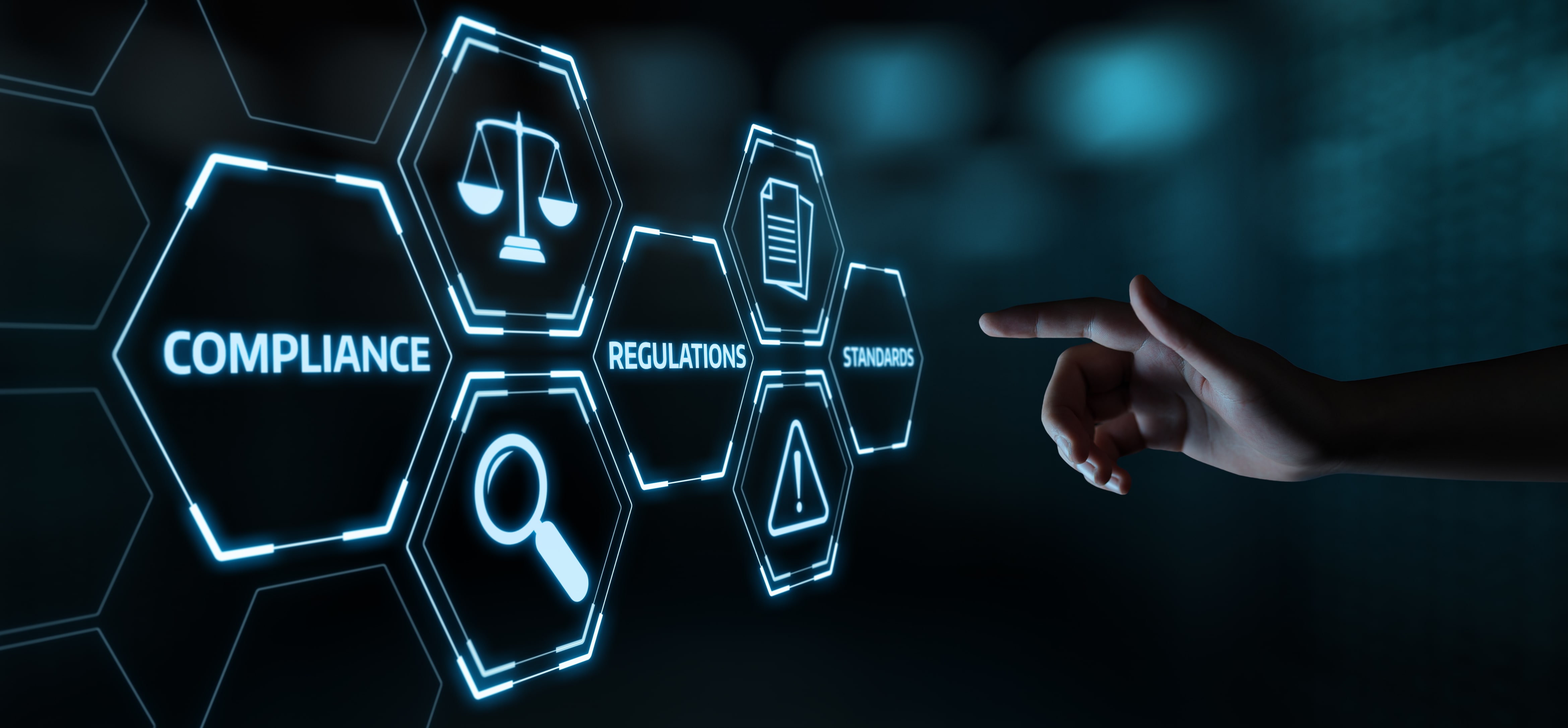PCI DSS, HIPAA, SOX, GLBA, GDPR, CCPA, ISO; the list of regulations that companies need to comply with these days is as long as the arm of the law. While it is daunting for organizations to keep track of all applicable regulations and formulate exhaustive plans to achieve compliance, these are blessings in disguise as they protect businesses and consumers alike. However, even organizations with a strong focus on regulatory compliance struggle to keep up with the list of requirements owing to regulatory uncertainty, insufficient visibility, stringent enforcement actions, and changing technological environments.
According to a 2019 Cost of Compliance Report conducted by Thomson Reuters, a dynamic regulatory landscape and risks posed by technological innovations, such as artificial intelligence (AI), Internet of Things (IoT), bring your own device (BYOD), etc., have continued to be some of the top concerns for compliance officers across the globe. Another major concern that has emerged over the last few months is managing the large-scale collection of personal data to combat the COVID-19 pandemic. While data analytics plays an undeniable role in studying the growth and spread of the coronavirus infection, it is imperative to monitor how organizations are processing data collected from mobile phones, health check apps, and more. Currently, there is no transparency on how such data is utilized and stored. There are also widespread concerns that the data collected for COVID-19 analysis might later be reused for surveillance purposes. Businesses need to implement responsible data collection and processing practices to remain compliant with data privacy regulations.
“Never forget the basics,” said Andrew David Bhagyam, the privacy operations and management lead at Zoho Corporation. “Most of compliance starts with common sense, as most of the information and assets are weighed by human emotions, philosophy, culture, and values.”
Organizations across the globe will continue to face challenges due to increased regulatory burdens. In such a dynamic landscape, compliance officers need to keep pace, formulate effective compliance frameworks, and manage risks more efficiently.
Keeping up with regulatory changes
The regulatory environment is always changing; existing regulations witness periodic updates, while new regulations are formulated to address growing security and privacy concerns. To make matters more complicated, most organizations need to comply with various laws, and not just one or two. As compliance requirements evolve, so should your compliance strategy. An organization’s infrastructure, policies, and frameworks need to adapt to keep pace with changing stipulations.
Take the General Data Protection Regulation (GDPR), for example. The GDPR reflects a significant change in the way lawmakers view data privacy and security now. It set a chain of regulatory changes across the world in motion, with each country formulating its version of privacy regulations. At first glance, these regulations appear to be of concern only to organizations based in their respective countries. However, a closer look at the fine print in these regulations reveals its global reach and impact on all organizations, as long as organizations process data belonging to that specific country’s citizens.
Additionally, since most of these regulations are mandated by the law, ignoring them is not an option, unless you want to shell out for multi-million dollar fines. Regulations like the GDPR force organizations to take a long, hard look at their data governance frameworks. Compliance often means having to rethink a lot of the current practices in an organization, including employee training and education. Employees often see compliance requirements in a different light, viewing it more as a nuisance than a fundamental building block of a successful business. While often overlooked, employees can make or break an organization’s compliance strategy, as ultimately they handle data every day.
Establishing transparency and accountability
A recurring theme with most regulations and industry standards is the need to exhibit steady accountability and compliance. Regulations and standards such as the GDPR, PCI DSS, and ISO/IEC 27001 mandate that organizations maintain reports of multiple organizational processes, such as network and systems security mechanisms, information security policies, identity management systems, etc. Also vital is proving historical compliance, which can be challenging without the right systems and controls in place. Organizations need to incorporate methods to monitor and record numerous aspects, such as employee data, financial transactions, and network logs to demonstrate conformance.
Additionally, companies need to ensure that the third parties they collaborate with are compliant. Many breaches are rooted in third-party vulnerabilities that might fly under the radar of an organization’s compliance framework. It can be challenging to ensure third-party compliance, but this can be fundamental to an organization’s overall compliance strategy.
Adapting to the changing technological landscape
Advancements in technology, such as the IoT, BYOD, AI, as well as machine learning (ML), and shadow IT, can make compliance more challenging than it already is. While such advancements are advantageous, they come with their own set of vulnerabilities and security loopholes, such as managing unauthorized devices, data residency and encryption, lack of visibility, and more. To combat compliance risks effectively, it is imperative to perform a thorough risk assessment before incorporating any new technology into your business processes. As existing technologies evolve, organizations find themselves in an intricate mix of new and old systems. In such a scenario, you need to know which systems are being used for what purpose, and ensure that all hardware and software components are regularly updated.
Practices such as BYOD, shadow IT, and dark data can be particularly tricky to manage as most of these implementations circumvent central IT systems. If left unchecked, organizations can find themselves constantly trying to control unauthorized systems and processes.
Building a successful compliance plan
Global regulations are bound to evolve. Organizations need to be prepared for such scenarios and establish the correct groundwork. Due to the sheer number of regulations that organizations need to comply with and the magnitude of best practices available, it can be overwhelming to understand what will work best for your business. The key is to understand your organization’s specific requirements and adopt the best suited, universally adopted frameworks to standardize your compliance processes.
Implementing a governance, risk, and compliance (GRC) plan can help organizations develop a central framework to tackle this important management concern.
Let’s take a look at some of the foundational tenets of an effective GRC plan that can form the basis of your compliance program.
1. Identify and prioritize your GRC framework’s objectives
The first step is to determine what you want your framework to achieve. So, understand your business processes, identify and rank your goals based on what is most important to your organization, and then determine the tools that you’ll need to achieve those goals.
2. Adopt an incremental implementation strategy
While it may seem like a good idea to implement the entire framework at one time, it is usually safer to roll out such organization-wide programs in phases. Achieving the fundamental results in the beginning and then building upon your initial framework will ensure that it includes various aspects and these are each given their due attention.
3. Clearly define key success indicators
Define the key success metrics for each of the goals that you identified at the beginning of our GRC framework process. It is crucial to pinpoint clear success metrics for each objective, as they will provide a true reflection of the strength of your framework.
4. Determine the tools your framework requires
Technology can significantly streamline the implementation of your GRC plan. Identify the tools that will help you meet your objectives faster and make sure to take ease of deployment, cloud presence, and application security into consideration while selecting your choices.
5. Adapt your organization’s operational strategy
GRC plans affect the entire organization’s processes and systems, so your GRC framework needs to be flexible enough to evolve as new threat vectors or regulations emerge. It is essential to sync your organization’s operations with your GRC plan to ensure continued success. Whether this involves setting up a dedicated compliance and risk assessment committee or conducting regular employee training programs, you will need to identify and factor in the changes that a GRC program will bring to your day to day operations.
An organization’s regulatory functions and frameworks need to advance from being merely reactive to a more proactive and tactical approach. As the world becomes increasingly security and privacy conscious, organizations are under more scrutiny than ever before. A carefully planned, comprehensive compliance framework can go a long way to ensuring not only legal compliance, but also instill faith and trust in your products and services.
“The success of a compliance program is not achieved through dictatorship or policing, but stems from the confidence employees exhibit through adequate training, and being advised of the processes that are knit into the compliance fabric,” said Bhagyam.
As long as data protection and privacy are embedded in your organization’s culture, any gaps or risks that might emerge can be identified and resolved with relative ease.











